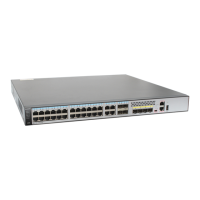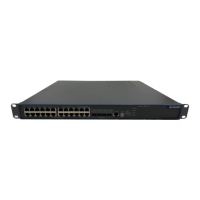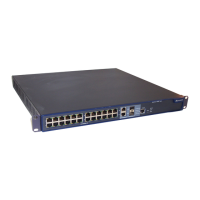By default, the trap function is disabled.
----End
6.25.6 Checking the Configuration
After the trap function is enabled in an NQA test instance, you can view trap messages in the
trap buffer.
Prerequisite
The configurations of the Trap function are complete.
Procedure
Step 1 Run the display trapbuffer [ size value ] to view the trap messages sent in an NQA test.
----End
Example
Run the display trapbuffer [ size value ] command. If information about the trap messages is
displayed, it means that the configuration succeeds.
For example:
<Quidway> display trapbuffer size 2
Trapping buffer configuration and contents:enabled
Allowed max buffer size : 1024
Actual buffer size : 256
Channel number : 3 , channel name : trapbuffer
Dropped messages : 0
Overwritten messages : 0
Current messages : 11
#May 6 2009 12:54:17 CBB6-PE3 SINDEX/4/INDEXMAP:OID
1.3.6.1.4.1.2011.5.25.110.2.0.1 ShortIFIndexMapTable changed.
#May 6 2009 11:02:37 CBB6-PE3 SRM_BASE/4/ENTITYREGSUCCESS: OID
1.3.6.1.4.1.2011.5.25.129.2.1.18 Physical entity register succeeded.
(EntityPhysicalIndex=17367040, BaseTrapSeverity=2, BaseTrapProbableCause=70144,
BaseTrapEventType=5, EntPhysicalContainedIn=1677721
6, EntPhysicalName="SRU slot 9", RelativeResource="", ReasonDescription="MPU9")
6.26 Maintaining NQA
This section describes how to maintain an NQA test instance. You can restart the test instance,
clear the statistics on the test result,to maintain a test instance.
6.26.1 Restarting NQA Test Instances
If a test instance fails, you can try to restart the test instance in the next test period.
Prerequisite
To restart an NQA test instance, run the following command in the NQA instance view.
Quidway S5700 Series Ethernet Switches
Configuration Guide - Network Management 6 NQA Configuration
Issue 01 (2011-10-26) Huawei Proprietary and Confidential
Copyright © Huawei Technologies Co., Ltd.
332

